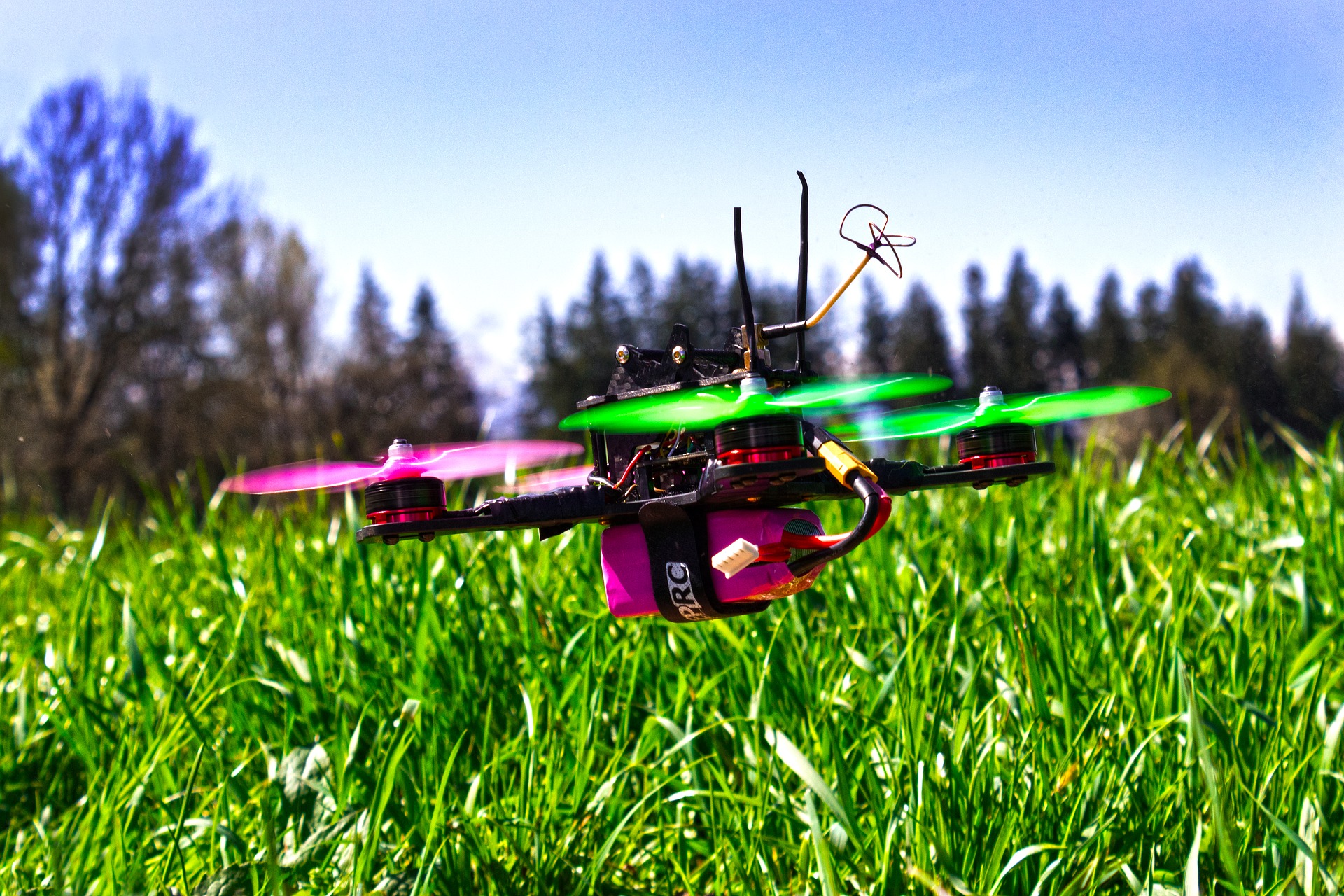-
Understanding your drone battery
- Drone News Update
-
What causes battery deterioration?
-
The essentials of proper battery maintenance
- Keep the battery within recommended temperatures
- Use first-party chargers
- Avoid depleting a battery to 0%
- Do not store the battery at 100%
- Charge and discharge periodically
- Store the batteries in fireproof bags or containers
- Watch out for signs of damage
-
Final thoughts
Safety is a core principle of being a drone pilot. This applies not only to flying a drone but also to the handling and storage of the drone and its components. This helps ensure that your hardware remains in working conditions for much longer.
The battery is one of the parts of your drone that needs special attention. Like any other battery, poor maintenance can quickly reduce the power storage capacity of the battery of your drone. At worst, you could end up with a battery that explodes or catches fire. Check out this guide on how to avoid damaging your drone batteries prematurely.
Understanding your drone battery
As with any problem, developing an understanding of the basic concepts is the best foundation for coming up with solutions. When it comes to drone batteries, it would be nice to understand exactly how these batteries work and the types of batteries that come with drones.
All batteries have three major components – a positive end (cathode), a negative end (anode), and an electrolytic medium. The electrolytic medium allows for the transfer of ions from the cathode to the anode and vice-versa. When a battery is being used, ions flow from the anode to the cathode. During charging, this flow is reversed.
Drones use either of two lithium-based battery types – lithium-ion (Li-ion) or lithium-polymer (Li-Po). You should be able to check which type your drone uses from its specs. The main difference between the two is the type of electrolyte used in the battery. Li-ion batteries use an electrolyte solution, while Li-Po batteries use an electrolytic gel-like polymer. Li-ion is an older technology and is still very prevalent, although Li-Po batteries have also started to become more common in smartphones and other mobile devices.
Li-ion batteries are cheaper on account of being easy to manufacture and based on older technology. They are well-regarded for having high power density but are mostly limited to cylindrical or rectangular shapes. The use of an electrolyte solution makes Li-ion batteries vulnerable to leaking when punctured, although this is a very rare occurrence.
Li-Po batteries are newer and not as common. This makes them significantly more expensive to manufacture. However, Li-Po batteries have a huge advantage in versatility. Since there is no limitation on the shape of Li-Po batteries, they can be built robustly into any battery casing or device. They are also lightweight and compact, making them ideal for mobile devices and drones. In terms of capacity and longevity, Li-Po batteries are generally inferior to Li-ion.
Although there are important differences between Li-ion and Li-Po batteries, maintaining them involves many of the same practices. Both batteries also deteriorate over time, especially when proper maintenance is not done.
What causes battery deterioration?
You have probably already noticed this with your devices, but rechargeable batteries tend to deteriorate naturally over time. After a few years, the power storage of a capacity decreases. This can be quite frustrating for drones, as even a fresh battery can only give you around 30 minutes of flight time.
The unfortunate news is that battery deterioration is something that happens naturally. It is also irreversible. What happens in the battery that causes this deterioration? There are two mechanisms that can explain it.
The transfer of charge through lithium ions is something that happens repeatedly and in different directions within the battery through recharge and discharge cycles. However, this is not a perfect process. Lithium ions may become permanently bonded to either the anode or cathode, making them unavailable for further ion exchange.
The nanoparticles that deposit on the terminals build up over time, eventually reducing the surface area of the terminals to react with the electrolyte. The net effect is that this diminishes the ability of the battery to hold a charge.
The second mechanism is called electrolytic decomposition. As the name implies, this refers to the breakdown of the electrolyte into unwanted byproducts. These byproducts are formed during the normal ion-exchange reactions, making them unavoidable.
Typical byproducts include carbon monoxide, carbon dioxide, and oxygen. You may notice that all these byproducts are gases. Over time, these gases can build up enough volume to cause the swelling of the battery. This is a very common observation in old batteries. If you continue to use a swollen battery, you risk having the battery explode and cause leakage of toxic or flammable battery fluids.
The essentials of proper battery maintenance
Battery deterioration may be inevitable, but it can be delayed with proper maintenance. The great thing about learning how to take care of your drone battery is that you can apply these same tips to all your battery-powered devices. The following are the most important pointers to keep in mind.
Keep the battery within recommended temperatures
Batteries do not respond well to extreme temperatures. Storing them at either too cold or too hot temperatures can accelerate the rate of deterioration. Your drone battery should come with specs that have a recommended temperature range. It’s a bad idea to keep your drone batteries inside the car on a hot day, but it is also equally bad to keep them in the basement during winter.
Use first-party chargers
Your drone battery should come with a charger that is designed specifically for the power rating of the battery. This is the only charger you should use. If the original charger gets damaged or lost, it’s still better to buy a first-party replacement rather than use a cheap, third-party knockoff.
The risk of using a third-party charger is that it may not be properly rated for your drone battery. Some drone batteries are made of multiple cells, and first-party chargers are made to charge these cells equally. Using a third-party charger may mean that the charging of multiple cells is unbalanced – other cells are over-charged while the others are uncharged. Over the long run, this will shorten the life of your drone batteries.
Avoid depleting a battery to 0%
Using a battery until it is completely depleted is something that will very quickly reduce its charge capacity. When this happens, some of the material of the anode tends to dissolve into the electrolyte. Again, this is irreversible damage that can result in the depletion of the storage capacity of the battery.
Fortunately, many of the drone batteries being sold today come with “smart” features that help avoid this mistake. These batteries will warn you way ahead of time before it runs down to 0%. Instead, there is usually a soft limit at around 15%. Should a battery go below this mark, it is recommended to recharge it as soon as possible
Do not store the battery at 100%
If you plan to store your battery for a long time (more than 48 hours), then it would be a good idea to discharge it to anywhere between 40% to 50% of its capacity. Many trials have been done that showed that batteries stored at 100% tend to deteriorate faster. At its fully charged state, the accumulation of ions in the battery’s anode accelerates the formation of the layer of deposits.
Again, there are smart batteries that have a self-discharge function that helps prevent this mistake from happening. These batteries will automatically discharge if they have not been used in a while. Take note that batteries will still naturally discharge over time even without this feature and can go down to dangerous levels.
Charge and discharge periodically
If you’re not planning to use your drone batteries for three months or more, you will have to take them out of storage and recharge them. Batteries naturally discharge over time so you will have to top them up to prevent them from getting completely depleted.
An even better practice would be to cycle through all your batteries, making sure that each one is actually getting discharged during a drone flight. You are not doing any favors to your battery when you keep them stored without being used.
Store the batteries in fireproof bags or containers
Invest in proper battery storage bags and containers, such as this fire-proof and explosion-proof battery bag from COLCASE. These are ideal for the long-term storage of your drone batteries. It’s also a good idea to keep the batteries inside a fireproof bag during charging, just to prevent the fire from spreading should an accident happen.
If you’re traveling by air with your drone, then you will have to store your batteries separately and keep them in your carry-on luggage. Some airlines may require that the batteries be kept inside a fireproof bag.
Watch out for signs of damage
If you suspect that a drone battery has been damaged, you should stop using it immediately. Common signs include swelling, discoloration on the terminals, or traces of battery fluid leakage. These signs of damage commonly happen after a bad drone crash.
A battery with signs of damage should be disposed of – do not try to recharge it or test it by placing it in your drone. You should look for proper battery disposal facilities in your town or city. Make sure to fully discharge a battery before disposal by submerging it in seawater for about 12 hours.
Although we use a lot of devices that have batteries, none of these devices go through the same level of physical abuse as drones. Knowing this, drone batteries should be treated with exceptional care and caution.
Final thoughts
Drone batteries are fairly robust, but it does not mean that they do not need maintenance. If you own a drone, then it would be a good idea to read up on exactly how your drone battery works and how you should care for it. Storing, flying with, or traveling with a damaged drone battery is a lot more dangerous than you might think.
The good thing about learning proper battery care is that you can apply the same knowledge to all your other battery-powered devices. With modern devices that come with permanently built-in batteries, we can all benefit from knowing how to extend a battery’s useful life.




